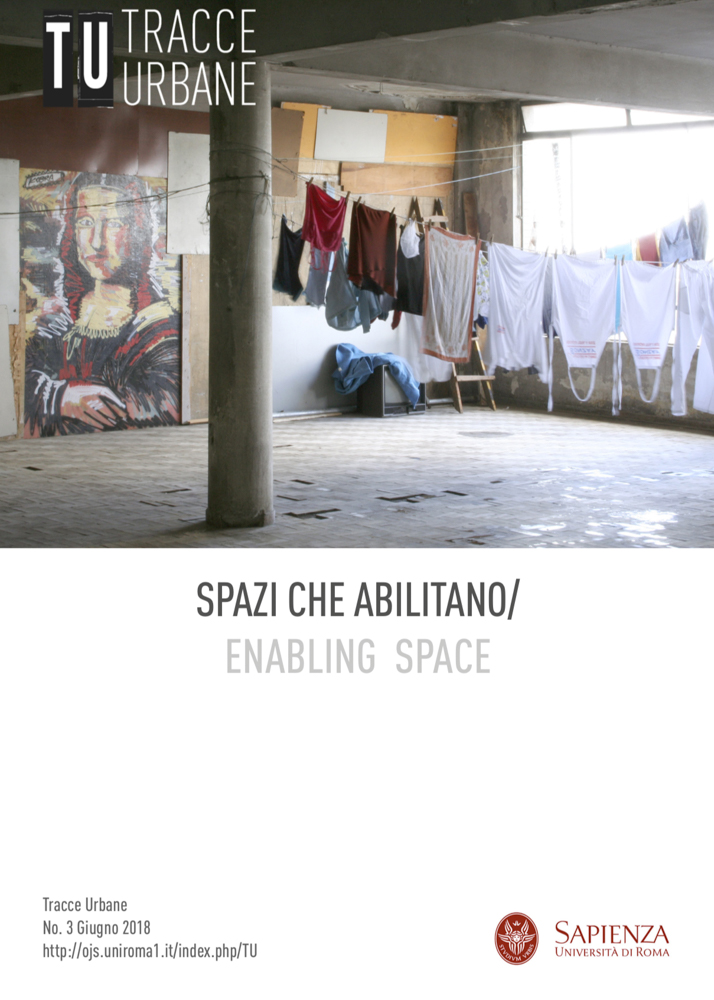Self-organized practices for complex urban transformation. The case of Bagnoli in Naples, Italy
DOI:
https://doi.org/10.13133/2532-6562_2.3.14278Keywords:
urban regeneration, governance, social movementsAbstract
The current political instability and economic uncertainty slow down and complicate urban transformations and their correspondent decisional processes. At the same time, however, “austerity urbanism” pushes cities to explore alternative policy-making approaches that might include new actors in the policy network.
We investigate this democratic potentiality by analyzing different configurations of actors (2002-2016) that have been participating in the over two decades-long, and still incomplete, transformation of a former industrial area in Bagnoli, in western Naples (Italy). In 2015, the central Government took over the city’s planning competences over the area. In response, several social movements have intensified their action against what they regard as an unchecked, “neo-liberal” transformation of the area. The compatibility of the respective views, as well as pragmatic considerations, led to an alignment between movements and the city and to their joint opposition to the Government. This configuration, we argue, makes room for usually excluded actors and is thus an innovative way of urban policy making.
References
Addelson, K. P. (2009). 5 Why Philosophers Should Become Sociologists. Symbolic Interaction and Cultural Studies, 119.
Allegretti, G., & Antunes, S. (2014). The Lisbon Participatory Budget: results and perspectives on an experience in slow but continuous transformation.
Andriello, V. (2003). Napoli, Bagnoli e la fabbrica: per una storia dello stabilimento Ilva-Italsider nel territorio. In M. E. Roma (Ed.), Dalle partecipazioni statali alle politiche industriali.
Andriello, V., Belli, A., & Lepore, D. (Eds.). (1991). Il luogo e la fabbrica. L’impianto siderurgico di Bagnoli e l’espansione occidentale di Napoli. L’impianto siderurgico di Bagnoli e l’espansione occidentale di Napoli, Graphotonic, Napoli. Napoli: Graphotonic.
Camera dei Deputati. (2016). Doc. CXXIX n. 2 Relazione sullo stato di avanzamento delle attività di risanamento dei siti industriali dell’area di Bagnoli.
Corbin, J., & Strauss, A. (2014). Basics of qualitative research: Techniques and procedures for developing grounded theory. BOOK, Sage publications.
Davies, J. S., & Blanco, I. (2017). Austerity urbanism: Patterns of neo-liberalisation and resistance in six cities of Spain and the UK. Environment and Planning A, 0308518X17701729.
Di Dato, M. (2016). Sulla riqualificazione ambientale e urbanistica di Bagnoli. In L. Rossomando (Ed.), Lo stato della città. Napoli e la sua area metropolitana. Napoli: Monitor edizioni.
Dines, N. (2000). Centri sociali: occupazioni autogestite a Napoli negli anni novanta. Quaderni Di Sociologia, (21), 90–111.
Farquharson, K. (2015). A Different Kind of Snowball: Identifying Key Policymakers. International Journal of Social Research Methodology, 8, 345–353. https://doi.org/10.1080/1364557042000203116
Fuller, C., & West, K. (2016). The possibilities and limits of political contestation in times of “urban austerity.” Urban Studies, 42098016651568.
Gargiulo, E., & Cirulli, A. (2016). Gli spazi occupati a Napoli: informalità, trasformazioni urbane e discorsi sui “beni comuni.” In G. Punziano (Ed.), Società, Economia e Spazio a Napoli. Esplorazioni E Riflessioni. Working Papers 28/2016 (pp. 84–94). GSSI SOCIAL SCIENCES.
Glaser, B. G., & Strauss, A. L. (2009). The discovery of grounded theory: Strategies for qualitative research. BOOK, Piscataway: Transaction Publishers.
Hastings, A., Bailey, N., Bramley, G., & Gannon, M. (2017). Austerity urbanism in England: The “regressive redistribution”of local Government services and the impact on the poor and marginalised. Environment and Planning A, 0308518X17714797.
Hilbrandt, H., & Richter, A. (2015). Reassembling austerity research. Ephemera, 15(1), 163–180.
Hou, J., & Knierbein, S. (Eds.). (2017). City Unsilenced: Urban Resistance and Public Space in the Age of Shrinking Democracy. London, New York: Taylor & Francis.
Lepore, D. (2017). Una svolta per il caso Bagnoli? Working Papers. Rivista Online Di Urban@itUrban@it - Background Papers Del Rapporto 2017 “Mind the Gap. Il Distacco Tra Politiche E Città,” 1.
Mayer, M. (2013). First world urban activism. Beyond austerity urbanism and creative city politics. City, 17(1), 5–19. https://doi.org/10.1080/13604813.2013.757417
Peck, J. (2012). Austerity urbanism. City, 16(6), 626–655. https://doi.org/10.1080/13604813.2012.734071
Ragozino, S., & Varriale, A. (n.d.). ’The city decides’. Political standstill and social movements in post-industrial Naples (IT). In S. Knierbein & T. Viderman (Eds.), Public Space Unbound. Urban Emancipation and the Post-Political Condition. London, New York: Routledge.
Strauss, A., & Corbin, J. (1990). Basics of qualitative research (Vol. 15). London: Sage.
Tonkiss, F. (2013). Austerity urbanism and the makeshift city. City, 17(3), 312–324. https://doi.org/10.1080/13604813.2013.795332
Varvasovszky, Z., & Brugha, R. (2000). How to do (or not to do) ... A stakeholder analysis. Health Policy and Planning, 15(3), 338–345. https://doi.org/10.1093/heapol/15.3.338
Vittoria, M. P., & Napolitano, P. (2017). Comunità informali come «luoghi creativi» e drivers di produttività urbana. Il caso dei Centri Sociali a Napoli. Rivista Economica Del Mezzogiorno, 31(1–2), 343–372.
Downloads
Published
How to Cite
Issue
Section
License
NOTA DI COPYRIGHT
Proposta di licenza Creative Commons
1. Proposta per riviste Open Access
Gli autori che pubblicano su questa rivista accettano le seguenti condizioni:
Gli autori mantengono i diritti sulla loro opera e cedono alla rivista il diritto di prima pubblicazione dell'opera, contemporaneamente licenziata sotto una Licenza Creative Commons - Attribuzione che permette ad altri di condividere l'opera indicando la paternità intellettuale e la prima pubblicazione su questa rivista.
Gli autori possono aderire ad altri accordi di licenza non esclusiva per la distribuzione della versione dell'opera pubblicata (es. depositarla in un archivio istituzionale o pubblicarla in una monografia), a patto di indicare che la prima pubblicazione è avvenuta su questa rivista.
Gli autori possono diffondere la loro opera online (es. in repository istituzionali o nel loro sito web) prima e durante il processo di submission, poiché può portare a scambi produttivi e aumentare le citazioni dell'opera pubblicata (Vedi The Effect of Open Access).


